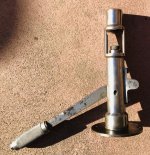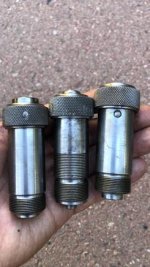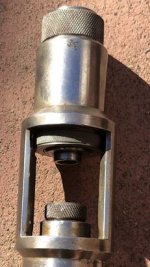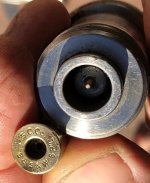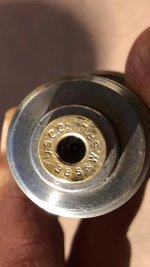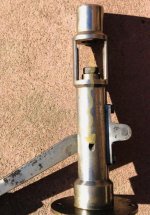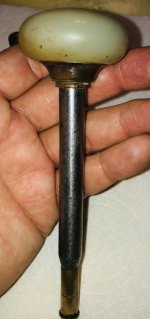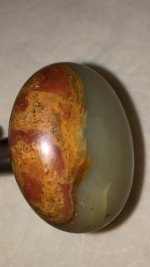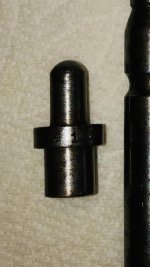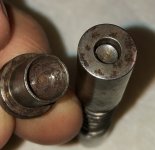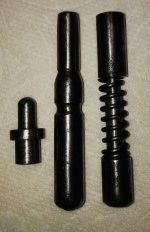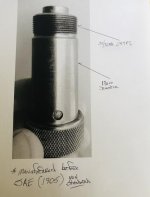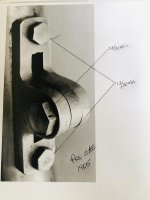I got this today on a hunch. The seller thought it was a reloading tool but I wasn’t convinced from the photos.
Sure enough it’s a very cool very early bench reloading press that I’ve never seen. It came with 3 dies. Two are for the 38 special and one is a large caliber rifle die like a 50/70. It’s definitely not a custom made tool. It’s an industrial tool since it also came with primer inserts and a small part numbered loading plunger that would only make sense to a manufacturers part list.
Has anyone seen one like this?
I figure it dates to between 1900-1910 since the nuts and bolts are not SAE. Standard size took place after 1905.
Murph
Sure enough it’s a very cool very early bench reloading press that I’ve never seen. It came with 3 dies. Two are for the 38 special and one is a large caliber rifle die like a 50/70. It’s definitely not a custom made tool. It’s an industrial tool since it also came with primer inserts and a small part numbered loading plunger that would only make sense to a manufacturers part list.
Has anyone seen one like this?
I figure it dates to between 1900-1910 since the nuts and bolts are not SAE. Standard size took place after 1905.
Murph
Attachments
Last edited:

